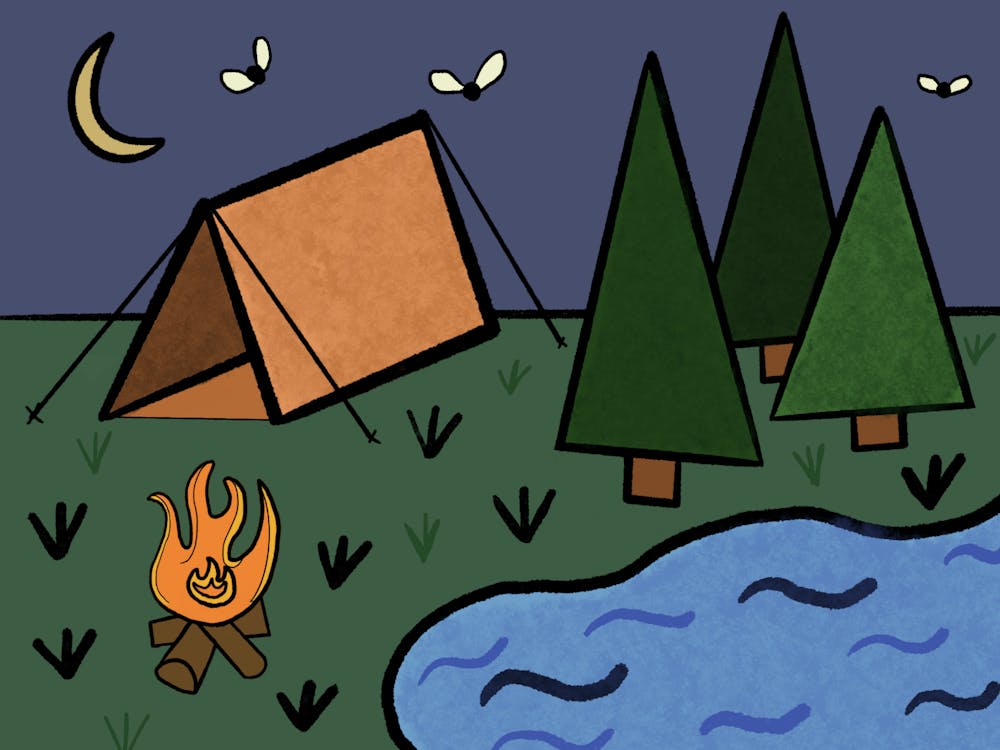With spring thawing and the sun finally coming out, getting back to the great outdoors is a subject in many people's minds.
There’s something about getting away from your cramped apartment and finding the open space outside. It makes you feel less boxed in. Although, it can be hard getting back into the groove of things after a long, cold winter. Alleviating the problem is as simple as having a checklist. Here are five ways to get back to camping this spring:
Pick the right tent
If you’ve gone camping before, you probably have an old tent lying in some forgotten place. Now, how long you’ve had that tent laying somewhere is the important part. Make sure to get it out and hang it on a clothesline, preferably in the sun. Tents that have been in storage a while tend to stick together and build up mildew.
This is because they are usually made of water repellent material, so, if it's somewhere that warms and cools often, it’s going to condensate. This causes the folds in the material to stick and grow mildew. Hanging it up in the sun warms the material making it easy to separate and also dries it out. When held up to the sun, if there are areas that are brighter than others, it means there are holes in the material. If this is the case, you may want to buy a new tent.
Buying a tent
Buying a tent is a difficult process, due to the many options available. Small pop-ups can be $50, while high performance backpacking tents are around $300. If you plan on having a good tent, expect to spend somewhere in the $150 to $200 range. This will get you a medium to small size tent that handles well in most conditions
It’s also important to decide between a three-season tent and a four-season tent. There are a multiple differences between the two:
Three-season: Generally the best option for most people. Three-season tents are double walled, meaning you can choose to take the tarp on or off This is so the airflow of the tent can be adjusted depending on the temperature and humidity. Three-season tents are also cheaper. If you are not an avid camper, buy a three-season tent.
Four-season: Four-season tents are designed to work during the winter. They have a thick, single-walled surface that traps heat. In general, only buy these when interested in winter camping. Seasoned campers and backpackers might prefer these for their versatility.
Why they might not be as comfortable, they handle temperature fluctuation better. If you are on a longer camping trip, a four-season will be able to handle adjustments in temperature, such as fall cold snaps.
Tip: If you want a cheaper tent, look for used ones on Craigslist or check out yard sales. Sometimes, you can find a decent tent for a fraction of the price. Although, it might have a strange smell. Used tents for sale are normally not well taken care of.
Sleeping bags
Buying the right sleeping bag is important. In general, there are two types:
Traditional/square: These bags are constructed in the standard square shape. Their material varies, but they are normally synthetic or cotton. These bags are best for those who prefer comfort as the square bag lets you move around easier during sleep.
Traditional bags are also generally cheaper. I recommend them, if you don’t go camping that often, and only camp in warmer weather. They also make good blankets at home if you completely unzip them. A high quality cotton bag is very plush and soft.
Mummy: Mummy bags are now the most common bags. They are called mummy bags because the base tapers and they have a hood that wraps around the head, looking similar to a sarcophagus. These bags are almost always made of synthetic material. Mummy bags are warmer than traditional bags, their design is built toward heat retention.
Mummy bags are either high-quality synthetic or down. Synthetic is cheaper and normally sweat wicking. Down is more expensive because it weighs less and packs easier. Down is also generally softer.
Ground mats
A common piece of equipment that is passed over are ground mats. Ground mats are thin, mattress-like padding that a camper lays on the ground underneath them while sleeping to help maintain body heat and comfort. While not always necessary in warmer weather, they are helpful nonetheless. Even in the summer months you can get cold because the ground saps a lot of heat. There are three general types:
Foam: Foam mats are the cheapest and most common. They lack comfort and provide minimal padding, but they are lightweight, durable and warm. While they are the cheapest option, there is a variation in price. Cheaper foam will be plush and look like the inside of a mattress cushion. More expensive options have a closed cell design that makes them thinner and more durable.
Air pads: A little higher up the pay scale are air pads. Air pads are like air mattresses, an inflatable sleeping surface. These can vary from cheap inflatable surfaces you blow with your own breath to full-scale air mattresses with auto-inflating attachments.
Air pads are more comfortable than foam but may have less warmth. It’s recommended to buy a small air pad rather than a large one, as it is portable. A full size air mattress is only good for car camping. If you like to car camp, a full size air mattress maybe a worthwhile investment.
Self-inflating pads: The most expensive option, self-inflating pads are a combination between the previous two options. These pads contain an air absorbing foam that once exposed to air, will self-inflate by pulling air in. When done, you squeeze the air out and roll them up.
They normally only come in single-person sizes and have a high cost. Therefore, these are only good for avid campers/backpackers. A regular person will not get their money's worth.
Tip: Another option when camping is to bring a hammock. Hammocks are great during the dry summer or early fall seasons. Only use them if it’s not going to rain, as they are made for sleeping under the stars scenarios.
Finding a campsite
Finding a campsite nowadays is easier than ever. A quick Google search can turn up the most popular places in the area. Make sure to check your local park services websites for a list of state camping grounds also. The Athens area has a large amount of campgrounds near it including Wayne National Forest and Hocking Hills, which is a great place to go for a wide variety of camping options.
Online websites like Hipcamp host reviews by campers and GPS location to the reviewed campsite. Hipcamp is a great place to find small, privately owned campgrounds. If you're into roughing it, FreeCampsite.net lists the options for free camping areas nationwide. However, free campsites often lack necessities like water, bathrooms, etc.
Food
Camp cooking is a difficult and time consuming skill that could have its own separate article. In general, here are a few basics:
Open fire cooking: Cooking with an open flame, as in a campfire, is a difficult skill to master. A wood fire does not have a steady temperature like a home stove. Maintaining the heat and temperature of a fire is a skill that takes time and practice.
With an open fire, you are not cooking using the flames of the fire. Instead, you are supposed to wait until the fire is almost finished burning. At this point, there will be a bed of coals. These coals are your cooking surface.
Flatten them out and use them as your heat source for your cookware. When cooking like this, either use specialized cookware or cheap cookware bought from a discount store, preferably used. Wood fires leave black soot on the cookware, so you don’t want to use decent pots or pans on it.
Gas stove cooking: Cooking on a stove is like cooking at home. The only difference being that there is less surface area for cooking. There are different types of fuels used for camp stoves, but propane is recommended as it is the most stable. A cheap propane stove will be around $50.
To find recipes for camp cooking, check out recipe sites and cookbooks. It’s a well known fact that these always contain a section dedicated to camping recipes.
Note: There are camp specific cooking methods like roasting and dutch oven cooking. Furthermore, cooking with these methods requires an understanding of open fire cooking.






